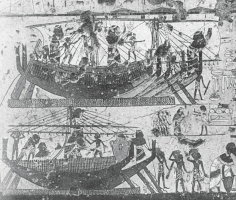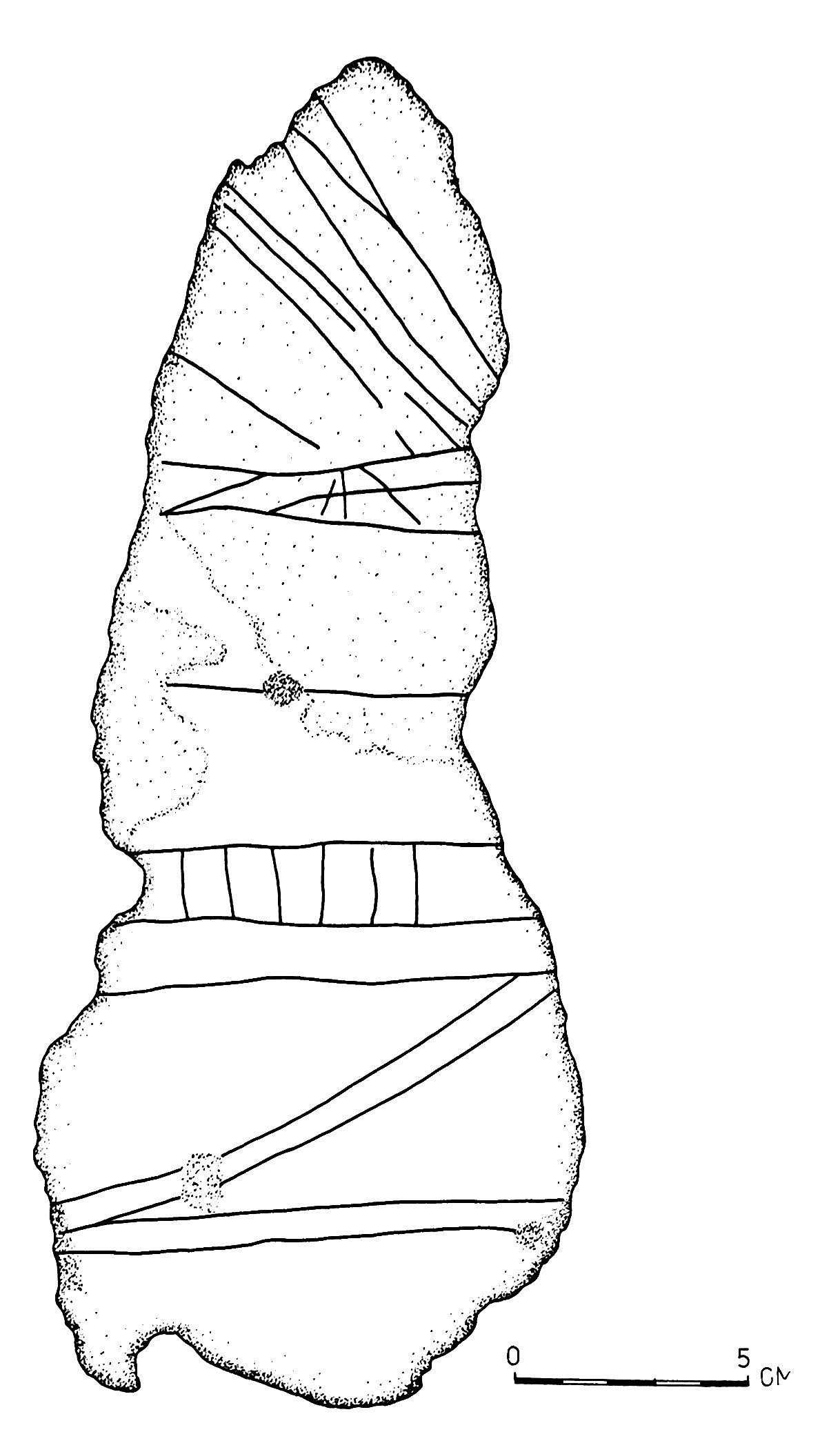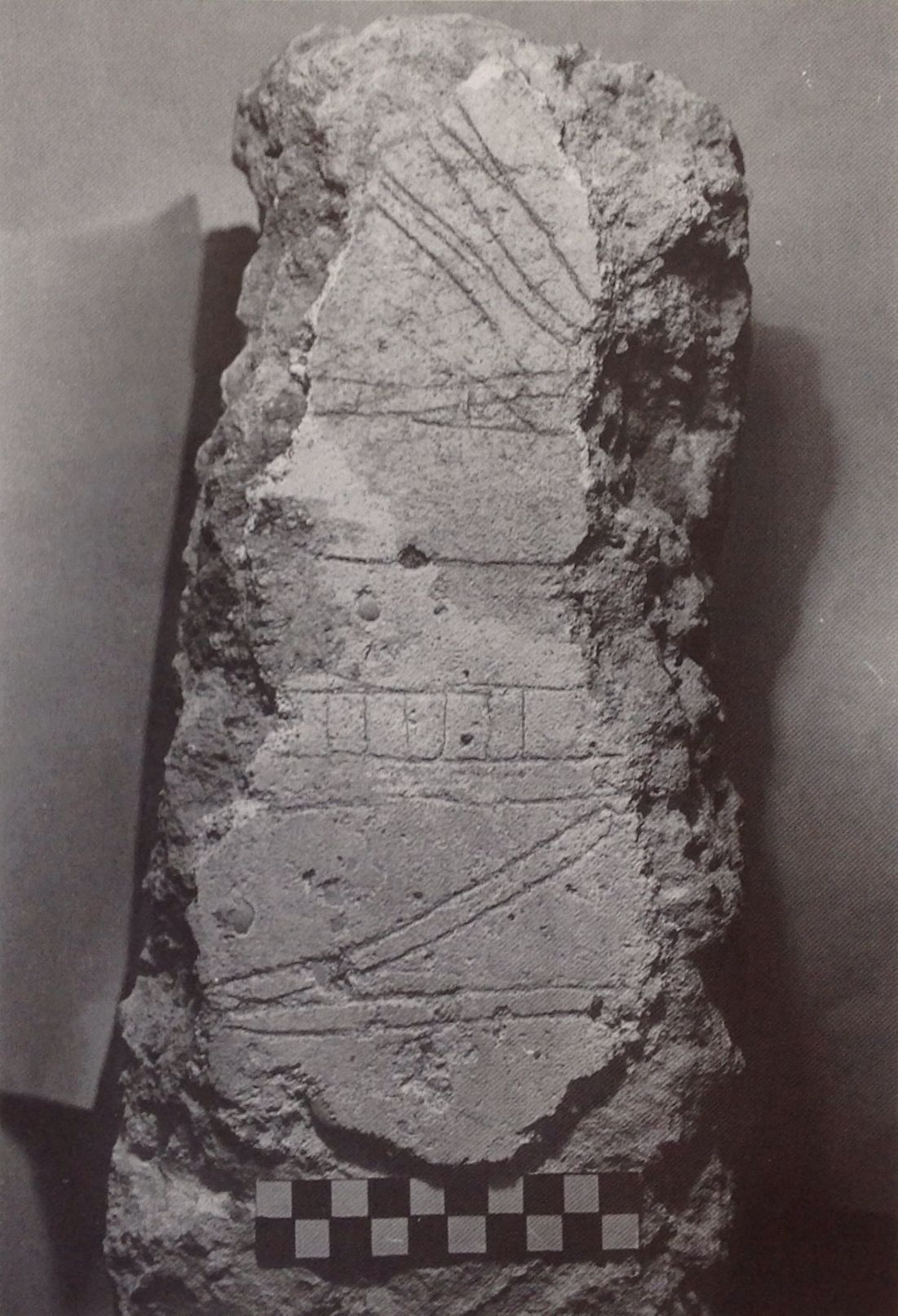Fragmentary ship preserving parts of the hull and rigging towards the bow section. The keel line consists of two parallel lines that rise in a smooth curve. Wachsmann reads the two straight horizontal lines above it as the sheerstrake, above which is a ladder motif made up of a broad horizontal band intersected by vertical lines which is plausibly a fence similar to that depicted on the Kenamun and Nebamun ships. The rigging is of the boom-footed type and has multiple lifts, which would give it a terminus ante quem of ca. 1200 B.C.
Fragmentary ship
L14
terminus ante quem of ca. 1200 B.C.
Tel Dor, Israel
H: 28.5 cm; max. W: 11.5 cm
Ashlar stone relief found in secondary use in a Hellenistic city wall
Knapp 2019: 126; Wachsmann 1998: 48-49, fig. 3.11; Wachsmann and Raveh 1984a: 224, 228
The block was reused, hence nothing is known of its original context.
Knapp, A. B. 2018. Seafaring and Seafarers in the Bronze Age Eastern Mediterranean. Leiden: Sidestone Press.
Wachsmann, S. 1998. Seagoing Ships & Seamanship in the Bronze Age Levant. College Station, TX: Texas A&M University Press.
Wachsmann, S. and K. Raveh. 1984a. “A concise nautical History of Dor/ Tantura,” IJNA 13: 223-41.






